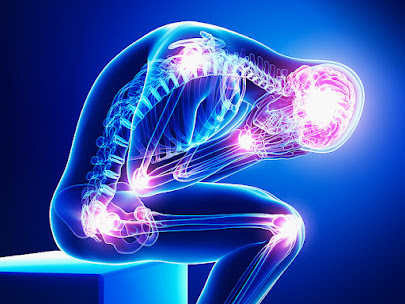What Is Erosive Osteoarthritis And How Do Get The Best Treatment?
You can have osteoarthritis with an inflammatory kick if the symptoms of hand arthritis come on suddenly and strongly.
Lots of Singaporeans suffer from hand and knee osteoarthritis brought on by wear and strain. On X-rays, more than half of adults over the age of 55 may see evidence of cartilage degeneration, and more than one in 10 persons experience the pain and stiffness associated with arthritis. Erosive knee osteoarthritis, a lesser-known kind of osteoarthritis, is far less typical and requires the attention of a knee pain specialist.
Erosive Osteoarthritis Explained:
Loss of cartilage, a rubbery material that cushions the ends of joints and allows for smooth movement, as well as joint deterioration are characteristics of typical OA.
However, imaging in erosive OA reveals regions of bone deterioration (erosions) that begin in the middle of the bone and result in deformities with a unique shape. Because there are additional indications of inflammation, such as swelling, redness, and warmth of the joints, the condition is sometimes referred to as inflammatory OA.
Erosive osteoarthritis symptoms include:
The following are indicators that you may have erosive osteoarthritis in your hands:
· Sudden onset of pain
· Swelling
· Redness
· Warmth
· Fingers that tingle
· The limited ability of the hand joints to move
· Stiffness in the morning that might persist for an hour
Another key indicator is the particular joints that are hurting. The little joints at the ends of the fingers are virtually always affected by erosive OA, although they are hardly ever affected by rheumatoid arthritis. The metacarpophalangeal (MCP) joint, the knuckle where the finger bones meet the hand bones, is virtually always affected by rheumatoid arthritis but practically never by erosive OA. The fingers' middle joints can move in any direction.
Since postmenopausal women are more likely to have erosive OA, your doctor may be more inclined to suspect it if you fall into that category.
Erosive osteoarthritis diagnosis:
To determine if you are likely to have erosive OA, your doctor will use your medical history, hand X-rays, maybe an ultrasound or MRI to look for characteristic erosions, blood testing, and a physical exam.
Although erosive RA causes localized inflammation in the joints, it shouldn't cause systemic inflammation as rheumatoid arthritis or psoriatic arthritis do.
Because they can identify particular bone abnormalities that distinguish erosive OA from other forms of osteoarthritis or inflammatory arthritis, X-rays are crucial in the diagnosis of erosive OA.
These consist of:
· Bone erosions at the center
· Osteophytes
· Subchondral tumors
· Scleroderma subchondralis
· Subluxations
· Ankyloses
· Joint enlargement
Both ultrasound and MRI may help detect soft tissue alterations, such as joint inflammation, as well as other signs of bone degradation.
How to differentiate Erosive OA from another osteoarthritis?
- It might be challenging to distinguish between erosive and conventional OA. There is a debate right now on whether erosive OA should be classified as a different disorder, even if some people believe it to be a kind of OA. The severity of the symptoms, the existence of erosions, and the swelling of the soft tissues in erosive OA are well-known distinctions.
- Apart from their fingers, people with RA are far more prone to have joint pain in other joints, such as the wrists or elbows. As was already mentioned, RA has a higher propensity than erosive OA to cause hand knuckle damage. Rheumatoid factors or anti-CCP are often positive in the majority of RA patients while being negative in individuals with erosive OA.
- It can sometimes be difficult to identify psoriatic arthritis from other kinds of inflammatory arthritis (PsA). The most difficult distinction is between erosive OA and psoriatic arthritis, which might have similar symptoms except for the skin condition in the latter. However, some PsA patients acquire psoriasis after experiencing arthritic symptoms; for others, the degree of skin illness is so little that they are unaware of it or correlate it with joint problems.
Best treatment options:
The best Osteoarthritis treatment in Singapore options include:
NSAIDs and analgesics for pain relief
NSAIDs and analgesics such as acetaminophen, which are routinely used to treat normal osteoarthritis, are also first-line therapies for erosive OA.
One short trial published in 2004 discovered that taking chondroitin sulfate in conjunction with an NSAID reduced the development of erosions, but it did not enhance either the physicians' or patients' perceptions of how they were doing.
Steroid Injection
Some doctors employ injections of anti-inflammatory drugs into afflicted joints to relieve symptoms, although the information on the benefits is inconsistent.
Our experience shows that the injections give short alleviation of discomfort. Injections into minor joints, on the other hand, can be unpleasant and have not been proven to reduce erosion development.
Heat treatment
Paraffin wax baths, moist heat, and other kinds of heat treatment can help relieve inflammation and discomfort associated with erosive OA.



Comments
Post a Comment